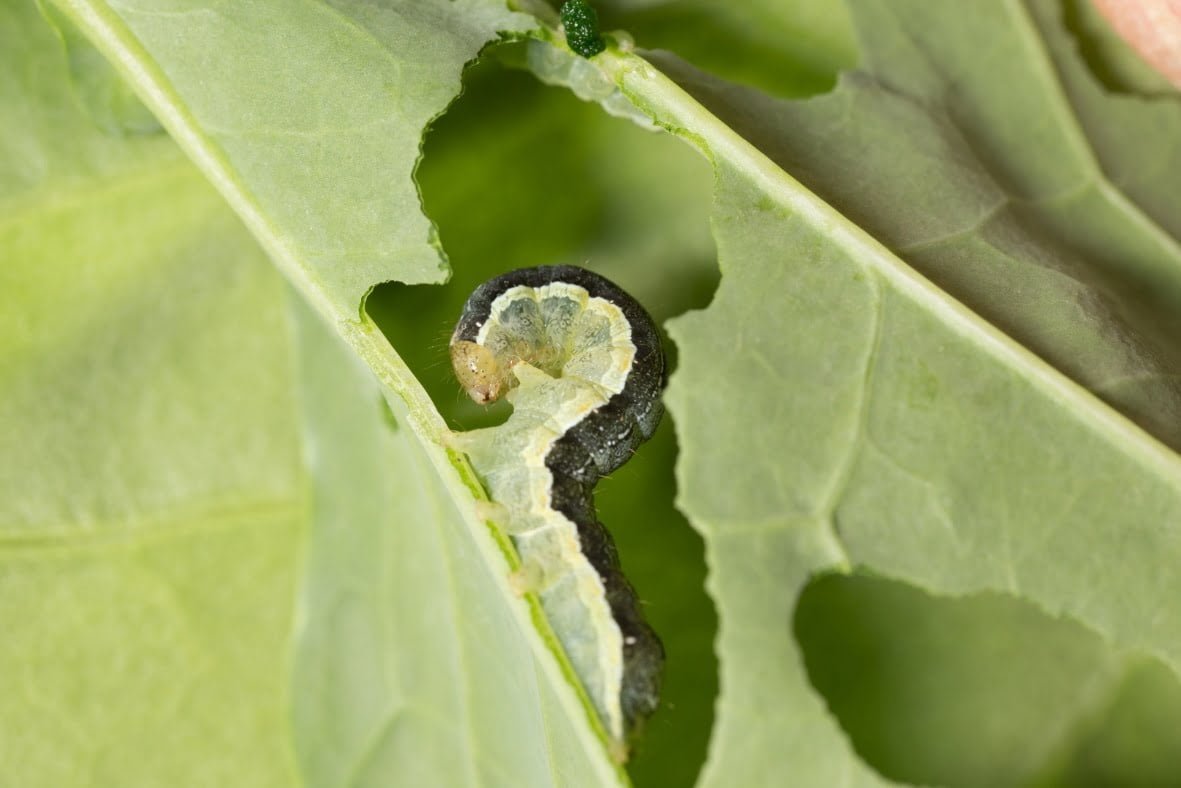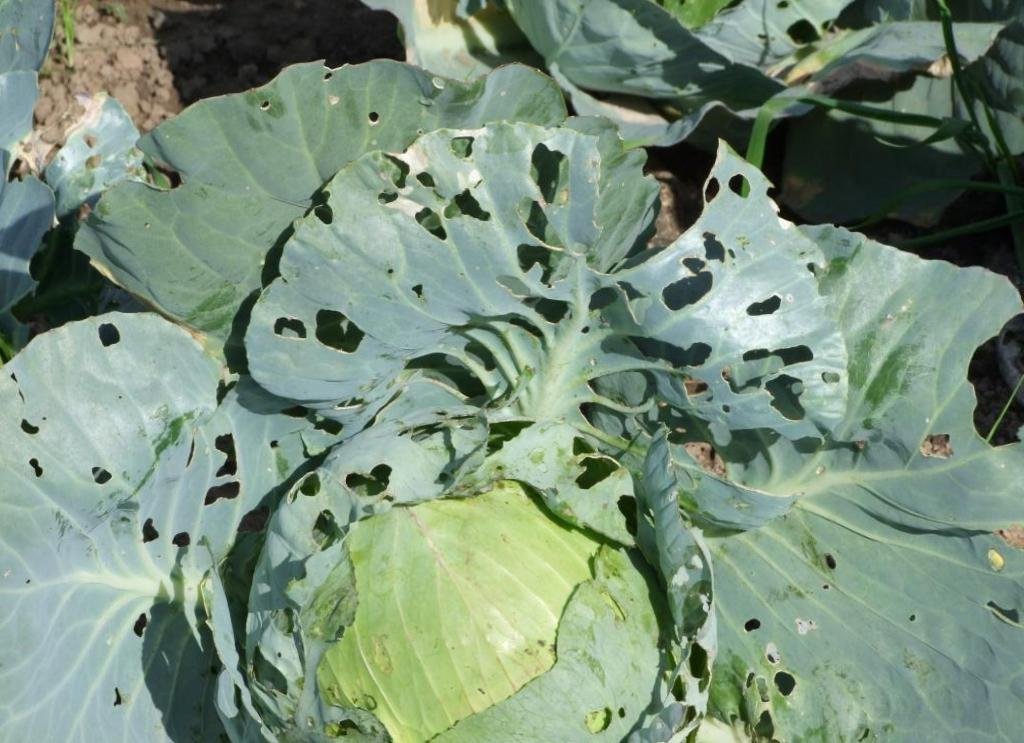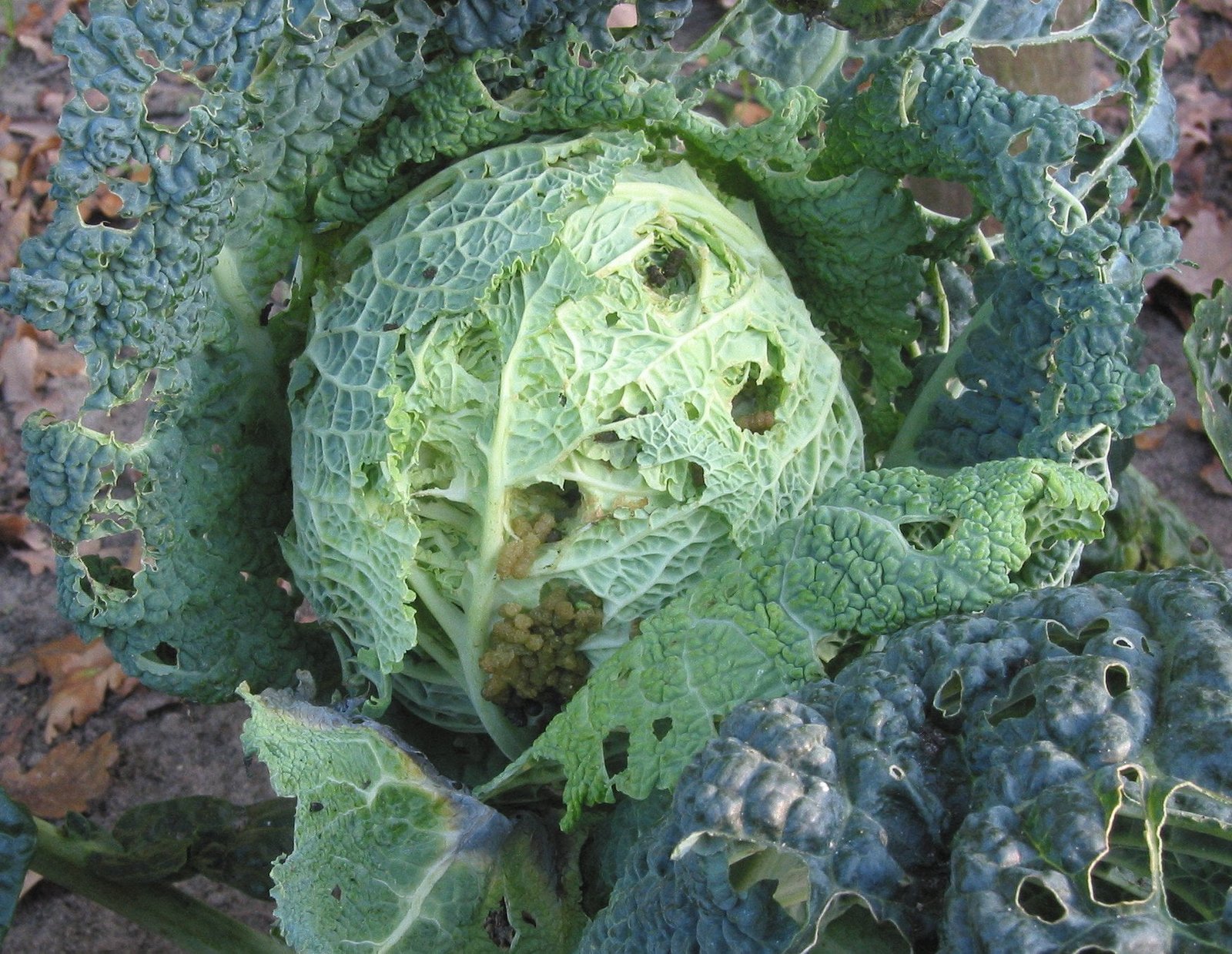Cabbage moth
Scientific name: L. mamestra brassicae
Lepidoptera: Noctuidae
Type of disease: insects
What is cabbage moth disease?
Also called cabbage moth, it is one of the most common types of pests in cabbage, and it is considered a multi-pest scourer. This disease feeds on about 70 species of plants from 22 families, including tomatoes, strawberries, onions, chrysanthemums, and others. It is found in Europe, subtropical Asia and North Africa, and early detection is essential to control cabbage moth.
Geographical spread:
- The insect is widespread in Europe and the Middle East.
Breadwinner:
- Cruciferous fruits, flax, beans, tobacco, beets, and others.
Cause of disease
The symptoms are caused by the larvae of the cabbage moth (Mamastra) Brassicae). The mature larvae enter cocoons and spend the winter hibernating in the soil. Adults have black to brown front wings with black-brown transverse ripples, and their clarity varies from one region to another. The hind wings are light grey. A few weeks after emerging from the soil, females lay white spherical eggs in clusters on the upper and lower surfaces of leaves. After hatching, the larvae begin to feed on leaf tissue, dig tunnels in the leaves, and eventually burrow into the head of the cabbage. The larvae appear yellowish-green or brownish-green in color, and there are no visible hairs on their bodies. The cabbage moth produces two generations annually. In late spring, the first generation of moths hatch from the soil, and you can see the larvae on infected plants. The second generation appears in late summer.
Suitable circumstances:
Average developmental times were found to be 7.6-29.5 days for eggs, 39.8-98.3 days for larvae (temperature range 10.5-18.5°C), 18.2-96.9 days for pupae, and 3.3-9.4 days for the pre-incubation period (temperature range temperature 10.0). -23.0 °C) and it takes about 6 weeks for the egg to develop into adulthood at a temperature of 25 °C, 9 weeks at a temperature of 20 °C, and 15 weeks at a temperature of 15 °C.
Show injury and damage:
- The larvae feed on leaves, and initially make small holes. As the larvae grow older, the holes become larger and can strip the host plant of its leaves. The large larvae burrow into heads of cabbage and cauliflower, leading to the growth of molds that result from the growth of microorganisms.
- Feeding damage appears on the leaves, often resulting in leaf skeleton.
- Traces of the worm's waste appear around the entrance holes and along the tunnels it digs.
- This makes cabbage moth larvae particularly harmful to crops.
- Cabbage moth larvae begin feeding on the leaves and digging tunnels into the head of cabbage. They also feed on the tender parts of the leaf and avoid the tougher veins, and the leaves often become edible except for the veins that structure the leaves. In contrast to the first generation, the spring to early summer generation, the second, more powerful generation (the late summer to October generation) can feed on the tougher tissues and does not limit itself to eating the leaves, but digs tunnels in the inner head of the cabbage. Traces of waste (feces) can be found ) around holes and along excavated tunnels. This makes cabbage moth larvae particularly harmful to crops.

An image showing the presence of mites on cabbage leaves and their feeding

Image showing: laying eggs on cabbage leaves

 Advanced pictures of the symptoms of moth cabbage infestation
Advanced pictures of the symptoms of moth cabbage infestation
What is the life cycle of cabbage moth?
Several days after emerging from the cocoon, female moths lay eggs in groups of approximately 20 to 100 eggs on the undersides of leaves or elsewhere within the plant structure. Knowing that the eggs are initially transparent, then the color becomes darker until they become brown or black, or they may also become purple.
Later, the first instar larvae eat the edges of the leaves on which they lay. In the third stage and beyond, the larvae disperse throughout the plant, knowing that there are six larval stages. After the third molt, the larva turns green with a dark back and a thick, yellow longitudinal lateral stripe. Eventually the pupation process occurs in the ground, and the pupae are approximately 2 cm long and are a bright brown color that turns black shortly before the adult moth emerges.
Formal description:
- The color of the butterfly is grayish brown, the color of the front wings is dark brown with black bars, and there is a white spot on each front wing with dark edges. The rear embryos are grey, the distance between the tips of the front wings is 4-5 cm
- The larvae are green in color when they are young and become greyish-brown in color. The color of the head and first thorax is black, and there are yellow lines on the sides of the thorax. The length of the fully grown larvae is 4-5 cm.
- The color of the pupa is reddish brown to dark brown and its length is 3.2-3.4 cm.
How to identify cabbage moth
Effect of cabbage moth on leaves
The adult moth has a wingspan of about 40 mm and is generally dark in color with variable shades of brown. The adult cabbage moth has gray, brown to black front wings. In addition, there is a kidney-shaped mark in her mediastinum. The color of its hind wings is light brown with a blurred spot in the middle. The head is brown or gray with white spots, and the belly is pale between brown and grey. Another useful feature is the black dagger-shaped marking on the upper half of the front. In addition, there is a bump located on the front shin of the leg, but it may require a magnifying glass to see it.
How to control cabbage moth
To obtain a satisfactory result in controlling this moth, it is necessary to correctly determine the timing of the appropriate applications that should be used to control the moth. So first look for it in early spring, and conduct weekly crop inspections to detect this pest and learn how to control it. When the larvae are small, it is the ideal time for treatment, because older worms cause more damage to plants.
Preventive measures necessary to control cabbage moth
Cabbage mite populations on plants
We previously mentioned the necessity of developing preventive programs and procedures to control them, so we will mention some of them:
. Use more resistant varieties.
. Picking up moth eggs and larvae if they are seen.
. Planting brassica crops, which play a role in preventing females from laying eggs.
. Plant early, to avoid population growth during the initial development of the head.
. Use traps to attract cabbage moths and catch them en masse.
. Avoid planting sensitive plants near cabbage crops.
. Eliminate noxious and toxic weeds as they may be alternative hosts.
. Plow fields after harvest to expose moths and pupae to predators and low temperatures.
Organic control
You can use parasitic wasps to destroy cabbage moth eggs, in addition to a variety of different animals that feed on the larvae, which include spiders, birds, and predatory beetles. Products that rely mainly on bacteria, in addition to viral preparations that kill larvae, can also be sprayed on the upper and lower surfaces of plant leaves. In cold weather, pathogenic nematodes can be used against caterpillars when tree leaves are wet.
Chemical control
Preventive programs and remedial measures must be put in place on a permanent basis, in order to know how to deal with pests if they exist. It is possible to use products based on pyrethrum or deltamethrin, which are effective ingredients against cabbage moths. It is also possible to use extracts of the firewood plant before harvesting, taking into account the harvesting period, which is seven days.
the reviewer
Cabbage moth Swedish taxon database identifier “Dyntaxa” (English) Edit on Wikidata
Cabbage moth Encyclopedia of Life (EoL) identifier (English) Edit on Wikidata
Cabbage moth Bradley and Fletcher checklist number (English) Edit on Wikidata
Cabbage moth Taxon identifier in the Animal Diversity Web Database (ADW) (English) Edit on Wikidata
Cabbage moth Global Biodiversity Information Facility (GBIF) identifier (English) Edit on Wikidata
Cabbage moth Butterfly Foundation ID (English) Edit on Wikidata
Cabbage moth Identifier Wildlife in Europe (English) Edit on Wikidata
Cabbage moth Lebendix ID (English)Edit on Wikidata
Cabbage moth Taxon identifier in the Interim Register of Marine and Non-Marine Species (IRMNG) (English) Edit on Wikidata
Cabbage moth Taxon Reference Identifier (TAXREF) (English)
English: cabbage moth, cabbage moth Egyptian: cabbage moth Belarusian: kapusnaya соўка Bulgarian: beautiful hair katala: arna de la col chestina: můra zelná semrig: gwyfyn bresych German: kuhluli eesti: kapsaöölane Sumi: kalijokonen, kalitarhayokonen French: brasker Hungarian: káposzta -bagolypke 日本語: ヨトウガ Thank you: About Us Awesome: Great Products Kyrgyzstan: kapusta kaupuljaki lietuvių: koposteni beledjalvis thank you very much: everything is fine bahasa melayu: rama rama kopis norsk bokmål: kålfly dutch: kooluil norsk: kålfly polski: Piętn ówka kapusnica Русский: good coffee slovenian: mora kapustova slovenian: kaposova sovka svenska: calveli українська: very nice



